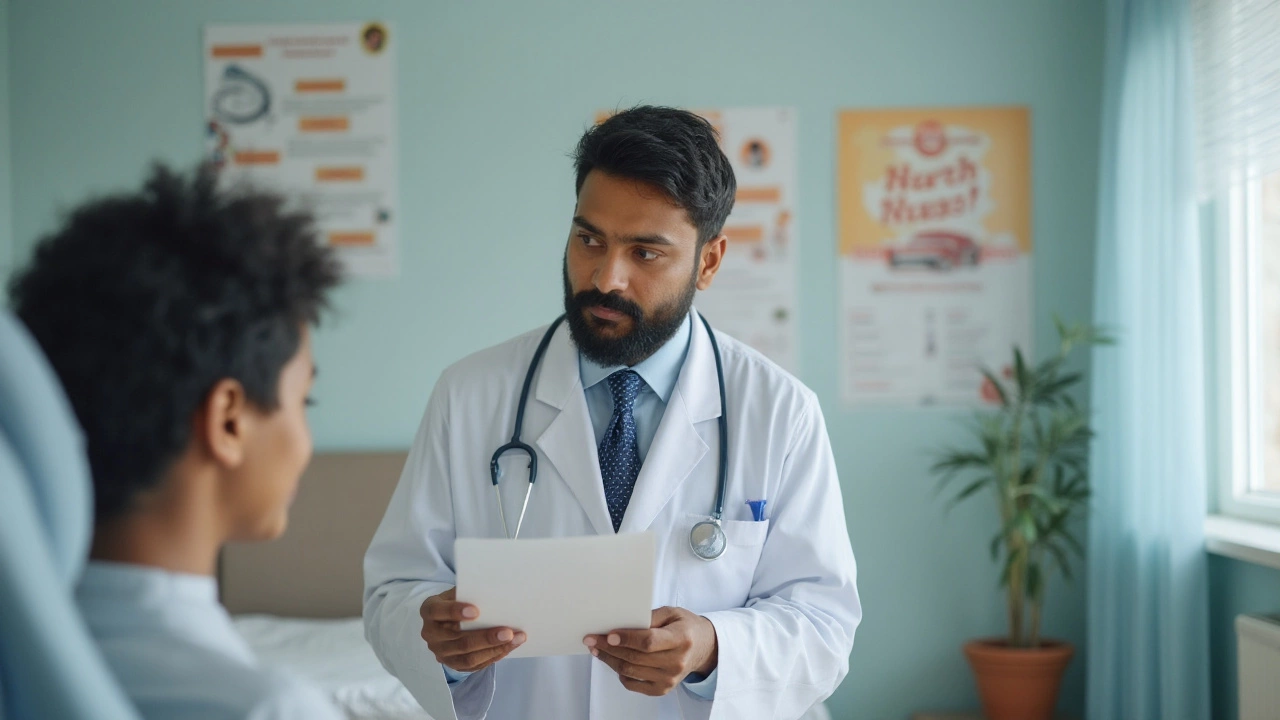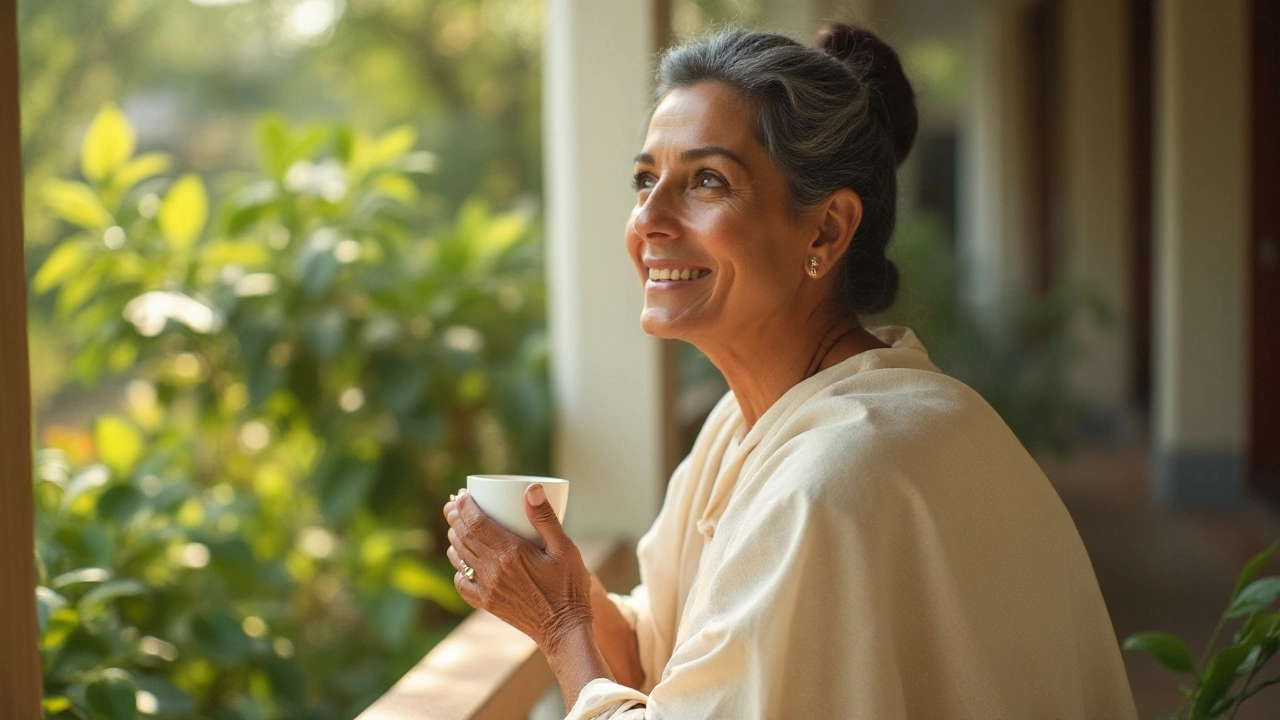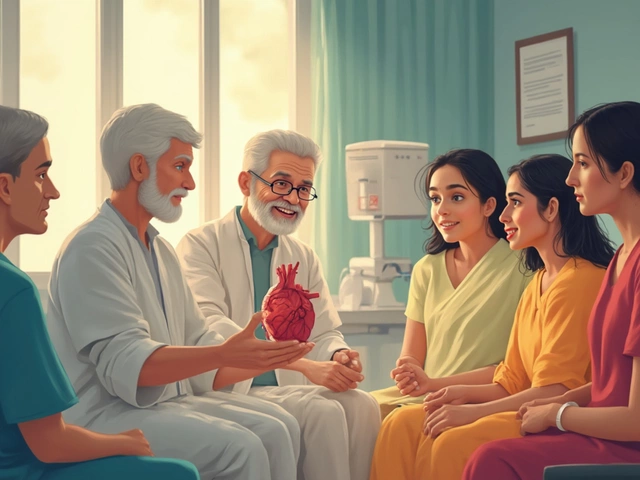When someone undergoes chemotherapy, it’s often a daunting experience, not only emotionally but also physically. Chemotherapy targets fast-growing cancer cells, but in the process, it can also harm other rapidly dividing cells in the body, leading to a range of side effects. This disruption can leave patients wondering about the path to recovery afterwards.
Our bodies have an incredible capacity for healing, but the journey is often complex and varies from person to person. Whether you're a patient, caregiver, or just someone curious, it's essential to know what to expect. We'll explore various aspects, from the immediate aftermath of treatment to long-term recovery strategies.
This guide will give you insights into the intricate dance of healing, the challenges that might arise, and practical tips to aid in reclaiming health post-therapy. Understanding this process can empower you or your loved ones to navigate life after chemotherapy with knowledge and hope.
- Understanding Chemotherapy and Its Effects
- The Body's Healing Process Post-Treatment
- Common Side Effects and How to Manage Them
- Factors Influencing Recovery
- Tips for Supporting Your Body's Healing Journey
Understanding Chemotherapy and Its Effects
Chemotherapy is a cornerstone of modern cancer treatment, recognized for its ability to combat a wide range of cancers by targeting and killing rapidly dividing cells. This characteristic, however, also explains why the treatment can feel so taxing on the body. Unlike focused treatments such as surgery or radiation that target specific areas, chemotherapy is a systemic treatment that can impact cells throughout the entire body. It doesn’t distinguish between cancer cells and other rapidly dividing cells, like those found in hair follicles, the digestive tract, and bone marrow.
Because of this widespread action, patients receiving chemotherapy may experience a variety of side effects. Hair loss, while one of the most visible effects, is just the tip of the iceberg. The impact extends to the digestive system, often leading to nausea, vomiting, and loss of appetite. The blood cells, particularly the white blood cells, can also be affected, resulting in a weakened immune system that leaves patients more vulnerable to infections. These side effects can vary greatly from one patient to another, influenced by the type of cancer, the drugs used, the dosage, and the patient's overall health.
"Chemotherapy can be a great equalizer," says Dr. Harold Jones, an oncologist at Memorial Hospital. "It can shrink tumors and halt the spread of cancer, but it doesn't come without a cost to the patient's quality of life during treatment."
Understanding the mechanism behind chemotherapy is crucial for those involved in cancer treatment, including patients, families, and healthcare professionals. Chemotherapeutic drugs work by interfering with the cancer cell's ability to grow and divide. Some drugs achieve this by damaging the DNA of the cancer cells, while others interfere with the nutrients needed for those cells to survive. The goal is to damage the cancer cells enough that they die or stop dividing, but this process also creates collateral damage, affecting healthy cells that divide quickly.
In recent years, the development of new drugs has begun to target cancer cells more specifically, aiming to reduce side effects and improve patient quality of life. Immunotherapy and targeted therapy are examples of treatments designed to attack cancer cells more precisely while sparing healthy cells. While traditional chemotherapy remains prevalent, these newer approaches highlight the evolution of cancer treatment toward more personalized medicine.
Patients undergoing chemotherapy benefit from understanding both the intended effects and potential side effects. This knowledge can help them prepare mentally and physically, arranging their lives in ways that minimize disruption and maximize quality of life during treatment. It also underscores the importance of a supportive network of healthcare providers, family, and friends to navigate the complexities and challenges presented by chemotherapy and its effects.
The Body's Healing Process Post-Treatment
Recovering from chemotherapy can often feel like navigating through a maze, as each individual's journey is uniquely personal and can vary greatly. As the body begins to mend, it's crucial to understand that the healing process involves not just the physical aspect but also emotional and psychological dimensions. After chemotherapy, the body's primary role is to repair the damage caused by the treatment. Healthy cells that were affected by the drugs need time and care to rejuvenate, and this can take weeks or even months. This period of recovery requires immense patience and a considered approach to self-care.
The liver, being a detoxification powerhouse, works tirelessly to process and eliminate the remnants of chemotherapy drugs. This puts a significant strain on the organ, often leading to fatigue as the liver expends considerable energy. The blood system is generally hit hard by chemotherapy since blood cells are some of the fastest growing cells. As a result, patients might experience anemia, characterized by fatigue and weakness, due to diminished red blood cells. White blood cells usually take the longest to recover, leaving the immune system vulnerable to infections. This vulnerability means taking extra precautions with hygiene and avoiding contact with sick individuals is essential.
Diet plays a pivotal role in recovery. A nutrient-rich diet can help bolster the recovery process, supplying the body with the vitamins and minerals needed to rebuild. Incorporating foods rich in antioxidants can aid in combating oxidative stress and inflammation. Physical activity, although sometimes demanding when energy levels are low, is beneficial in stimulating healing processes and maintaining muscle strength. Gentle exercises such as walking or yoga can greatly support reconditioning the body. It's not unusual for patients to experience a range of emotions during this period as the psychological impact of treatment and its effects begin to surface. Engaging in therapy or support groups can offer immense relief and promote emotional healing.
"The period following chemotherapy can be challenging, but remember, the same courage that got you through treatment will also aid in recovery." — American Cancer Society
Recovery is also about rebuilding one's life rhythm; getting back to work, social activities, or hobbies should be approached gradually. Setting realistic goals and celebrating small milestones can significantly enhance confidence and a sense of accomplishment. It's important to stay connected with healthcare providers during this recovery phase. Regular follow-ups can address any lingering concerns and help monitor the healing trajectory. Devising an individualized recovery plan with a healthcare team can help manage expectations and lessen anxieties. Always listen to your body, rest when necessary, and don't rush the healing process.
While healing timeframes differ, research indicates that most people begin feeling more like themselves within six months to a year post-treatment, though some side effects can linger longer. It's essential to remember that healing is not linear, and patience coupled with gentle care often leads to the best outcomes. Ultimately, fostering a supportive environment and maintaining a proactive, positive approach can make a world of difference in easing the journey to recovery from chemotherapy.

Common Side Effects and How to Manage Them
Chemotherapy can be a double-edged sword, offering a chance to fight cancer but often leaving patients grappling with an array of side effects. These effects vary widely among individuals, influenced by the type of chemotherapy, dosage, and personal health conditions. Yet, they are a significant part of the chemotherapy experience, impacting day-to-day living and overall quality of life.
One of the most common side effects is fatigue, a profound feeling of exhaustion that doesn't always improve with rest. Patients describe it as an overwhelming tiredness that can affect both the body and mind, making even simple tasks daunting. To manage this, healthcare professionals suggest pacing activities, focusing on prioritizing essential tasks and taking frequent breaks. Incorporating light exercises such as walking can also boost energy levels by improving blood circulation and reducing stress. Getting enough sleep and maintaining a balanced diet is crucial for combating chemotherapy-induced fatigue.
Another prevalent side effect is nausea and vomiting, often a dreaded aspect of chemotherapy. While modern anti-nausea medications have improved the quality of life significantly, some patients might still experience these symptoms. Staying hydrated and adjusting meal sizes—opting for smaller, more frequent meals instead of larger ones—can help. Ginger, either as a supplement or in natural form like ginger tea, might also offer relief. Relaxation techniques such as deep breathing exercises and aromatherapy have been noted by some patients to reduce nausea.
Handling Hair Loss
Hair loss or alopecia is one of the most visible and emotional side effects. It can affect not only the scalp but also other parts of the body. The impact of hair loss extends beyond physical appearance; it can shape a patient's self-image and emotional health. Planning for hair loss before it happens can help, such as cutting the hair short or considering a wig, scarf, or hat. Some patients find comfort and empowerment in choosing bold headwear styles or exploring creative makeup techniques.
According to the American Cancer Society, “Finding a support group or speaking with a counselor can help patients deal with the emotional aspects of hair loss, providing a space to share feelings and experiences.”
Another less talked about side effect is 'chemo brain,' a term used to describe the cognitive changes that some patients experience, such as memory lapses and difficulty concentrating. Journal articles suggest incorporating brain exercises such as puzzles or reading to keep the mind active is beneficial. Creating lists, setting reminders, and establishing routines can also aid in navigating daily responsibilities.
Chemotherapy can also affect appetite and taste preferences, making food less appealing. This can lead to weight loss and nutritional deficiencies. Many patients find that experimenting with different flavors and spices can rekindle interest in food. Sometimes, switching to a plant-based diet or including fresh, vibrant fruits and vegetables enhances both taste and nutritional intake. Trying new recipes or even working with a nutritionist can make meal planning less challenging and more enjoyable.
Personal experiences and adjustments may vary, so it’s important to work closely with the healthcare team to tailor strategies that suit individual needs. Taking charge and finding practical solutions not only alleviates the side effects but also empowers patients to have a better quality of life during and after treatment. It can be transformative, creating a balanced approach that focuses on healing and recovery.
Factors Influencing Recovery
When embarking on the journey to recover from chemotherapy, numerous elements play a pivotal role in determining how thoroughly and quickly the body can heal. Each person’s recovery experience can vastly differ due to a combination of physical, emotional, and lifestyle factors that intertwine in intricate ways. Understanding these variables can provide valuable insight and enhance the approach to achieving better health.
Physical Health Prior to Treatment
The state of an individual’s health before starting treatment has a significant impact on how effectively they recover post-chemotherapy. Those with a robust immune system and no pre-existing conditions often find their body bouncing back more swiftly. It's also noted that younger patients tend to recover more rapidly due to their body's natural resilience. However, this doesn't mean older patients cannot achieve full recovery; it merely highlights that the path might be different and sometimes longer.Nutrition and Dietary Habits
A nutritious diet rich in essential vitamins and minerals can greatly support recovery by boosting the immune system and helping repair cells. Proteins, antioxidants, and certain vitamins are crucial in rebuilding damaged tissues. Meals should incorporate a variety of colorful fruits and vegetables, lean proteins, and whole grains to ensure adequate intake of these nutrients. According to a study published in the Journal of Cancer Survivorship, patients who maintained a balanced diet post-treatment reported improved energy levels and overall better quality of life.Psychological and Emotional Well-Being
Another powerful influence on recovery is the mental state of the patient. Stress, anxiety, and depression can diminish the body’s ability to heal effectively. Psychological support, whether through therapy, support groups, or meditation, can provide essential mental relief and encourage a positive outlook. In the words of oncologist Dr. Jane Goodwin, "Mental resilience often mirrors physical healing. Patients who manage to sustain hope and maintain a positive outlook frequently do better."Lifestyle Choices
Recovering from chemotherapy requires adopting a lifestyle that promotes health and healing. Regular, moderate physical activity has been shown to foster recovery by increasing strength and stamina, reducing fatigue, and enhancing mental well-being. It doesn’t have to be rigorous; even short daily walks or gentle yoga can be beneficial. Avoiding tobacco, limiting alcohol, and steering clear of harmful substances also support the body's recovery efforts.Medical Follow-Up and Care
Consistent medical follow-up ensures that any lingering side effects or new symptoms are addressed promptly. Regular consultations with healthcare providers allow for personalized post-treatment care, tailored to the individual’s evolving needs. Having a clear, ongoing line of communication with doctors can often lead to early intervention, should any issues arise, helping to navigate the complex recovery landscape. A study conducted by the American Cancer Society revealed that patients who engage in regular follow-up care are more likely to report satisfaction with their health outcomes.
Tips for Supporting Your Body's Healing Journey
The aftermath of chemotherapy can be a challenging phase, yet it is also a time when you can actively take steps to support your body's healing. Regaining vitality after such a rigorous treatment requires understanding and nurturing your body in ways that are both effective and gentle. The first step is recognizing the importance of nutrition. Chemotherapy can alter your appetite and affect nutrient absorption, which makes a balanced diet crucial. Incorporating a variety of fruits, vegetables, whole grains, and lean proteins can help replenish the body's stores and boost immunity. It's not just about eating well; staying hydrated is equally important. Water supports almost every bodily function and aids in flushing out toxins that are still in the system.
Physical activity, although seemingly daunting after a long bout of illness, can significantly aid recovery. Exercise enhances blood circulation, reduces fatigue, and can even improve mood. The key is to start small and listen to your body. Simple activities like walking or light stretching can set the stage for more robust exercises later on. A symbol of commitment to healing is creating a structured routine. This doesn't have to be rigid, but having a plan for meals, exercise, and rest can promote consistency and make the recovery feel manageable. Rest is another pivotal component of healing. Ensuring you get enough sleep allows the body to repair cells and regenerate. The goal should be quality rest, which might require creating an environment conducive to sleep.
"According to the American Cancer Society, gentle physical activities, such as yoga or tai chi, can improve quality of life post-chemotherapy,"providing mental and physical benefits.
Mental well-being plays a mighty role in physical recovery. The period after treatment can be ripe with anxiety about health, which is why stress management techniques can be beneficial. Practices like meditation, deep breathing, and mindfulness are simple ways to help calm the mind. These practices can enhance your capacity to handle emotions and maintain a positive outlook. Connecting with others can be both comforting and healing. Whether it's talking to loved ones or joining a support group, sharing experiences and feelings helps reduce feelings of isolation. Emotional support is not just a nicety; it has proven physiological benefits too. Additionally, consider consulting with a healthcare professional regarding supplements or medications that can assist in the healing process.
While personal effort is vital, it's also essential to attend regular follow-ups with healthcare providers. They provide a roadmap for long-term health and catch any potential issues early. A proactive approach to health management assists not only in monitoring post-chemotherapy recovery but also in making necessary adjustments to treatment plans. While every individual’s journey is unique, the shared goal is to live fully beyond treatment. By investing in these aspects and allowing ample time for recovery, the body has a better chance at healing holistically.





Write a comment